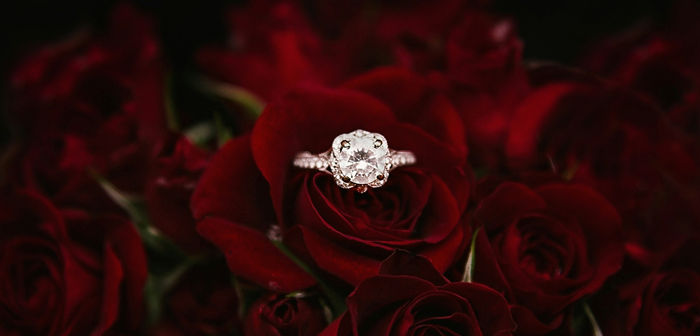Lab-grown diamond jewelry, especially engagement rings, has emerged as a widespread, ethical, and budget-friendly option for mined diamonds, delivering the same sparkle and elegance. However, many couples question whether these lab-created stones can withstand the daily wear and tear. Are they as resilient as natural diamonds, and will they hold their value in the long run?
In this article, we will discuss lab-grown diamonds’ longevity, grade, and investment possibility.
The Fundamentals of Lab-Grown Diamonds
Traditional diamond mining is frequently linked to environmental harm, high expenses, and ethical challenges, such as human rights abuses in conflict zones. Lab-grown diamonds offer a solution by mimicking the natural diamond formation process in a controlled setting.
According to Markets and Markets, the millennials and GenZ are specifically inclined towards CVD lab-grown diamonds, which have surged the demand. It was anticipated that around 70% of millennials preferred lab-grown diamond rings for their engagement. They bought synthetic diamonds to tackle adverse social and environmental effects associated with natural diamonds.
These diamonds are created using carbon, intense heat (around 1,500°C), and high pressure, replicating conditions found deep in the earth. Advanced techniques like High Pressure-High Temperature (HPHT) and Chemical Vapor Deposition (CVD) allow scientists to produce diamonds with similar physical and chemical possessions.
Durability and Longevity of Lab-Grown Diamonds
Lab-grown diamonds are practically identical to mined diamonds in durability and longevity. Both types are made of pure carbon, positioned in the same crystal configuration, giving them the same hardness. The reason behind their sturdy nature is their hardness.
According to the International Gemological Institute, both lab-grown and natural diamonds measure 10 on the Mohs Scale. No other gemstone or material is as tough as a diamond. There is no substantial difference in their physical or chemical properties, as they undergo the same formation process. Consequently, lab-grown diamonds offer the same lasting durability and brilliance, ensuring they stand the test of time.
Factors Affecting the Longevity of Lab-Grown Diamonds
The longevity of lab-grown diamonds is influenced by several key factors, including their cut, setting, and care. A well-cut diamond with a strong setting will be more durable, while improper mounting or rough handling can increase the risk of damage. Exposure to chemicals, improper cleaning, or impact can also affect the diamond’s appearance.
These factors are the same for natural diamonds, as both types have identical chemical and physical properties. Whether lab-grown or natural, proper care, such as avoiding harsh chemicals and regular maintenance, is essential to preserving a diamond’s brilliance and longevity.
Lab-Grown Diamonds vs. Natural Diamonds: Longevity Comparison
When comparing the longevity of lab-grown diamonds to natural diamonds, both offer the same durability and resistance to wear. Since both types of diamonds share identical chemical compositions and structures, their hardness and ability to withstand everyday use are equivalent. Lab-grown diamonds, like natural diamonds, will not fade, chip easily, or lose their brilliance over time if properly cared for.
Moreover, lab-grown diamonds can be customized according to the requirement. For instance, according to The Knot, round-shaped diamonds were quite popular a few years back for engagement rings. However, their demand suddenly dropped and became only 38% in 2017. Currently, the hottest trend is for oval-shaped diamonds, the demand of which has risen from 2% to 23%.
Synthetic diamonds appear exactly like natural diamonds; the main difference lies in their origin. Lab-grown diamonds are developed in controlled backdrops, while mined diamonds form over millions of years underground. However, this difference in formation has no impact on their longevity, making both options equally durable for long-term use.
Consumer Experiences and Feedback
Some consumers, however, express concerns about long-term resale value despite being satisfied with overall quality and sustainability.
According to Grown Brilliance, consumer experiences with lab-grown diamonds are largely positive. Many appreciate their affordability, ethical sourcing, and identical appearance to natural diamonds. Feedback highlights their durability and brilliance, comparable to mined diamonds.
Millennials and GenZ have now inclined more towards lab-grown diamond engagement rings than natural diamond rings. The primary reason is the price distinction between lab-grown diamonds and mined diamonds. At a much lesser price than natural diamonds, the intricate stones can impress people.
Maintenance and Care Tips for Lab-Grown Diamond Rings
Proper maintenance and care are essential for preserving the brilliance of lab-grown diamond rings. Regular cleaning with a mild soap solution and a soft scrub helps remove dirt and oils. Avoid exposing the ring to abrasive chemicals, such as bleach or chlorine, which can harm the metal setting.
The ring must be kept separately in a soft pouch or different compartment to prevent scratches. Additionally, periodic inspections by a jeweler ensure that the setting remains protected and the diamond is in fine condition.
According to the Gem Society, although lab-grown diamonds are 30-40% lower in price than mined ones, they need the same care and attention. With proper care, lab-grown diamond rings will retain their beauty and durability over time.
The Future of Lab-Grown Diamonds
The outlook for lab-grown diamonds is bright, driven by increasing buyer demand for sustainable, virtuous, and cost-effective options for mined diamonds. Technological advancements are enhancing the accessibility of lab-grown diamonds, resulting in better quality and a wider range of sizes and cuts.
According to Brainy Insights, numerous lab-grown diamond manufacturers are seeing a significant rise in demand. These synthetic diamonds are gaining wider acceptance in the fashion and jewelry industries, and their applications are increasing in the industrial sector.
The worldwide market magnitude of synthetic diamonds was $10.8 billion in 2022. It is surging at a CAGR of 6.7% during the assessment period, i.e., from 2023 to 2032. The market volume is anticipated to reach $20.6 billion by 2032.
Frequently Asked Questions
Are there any specific maintenance practices unique to lab-grown diamonds?
Lab-grown diamonds need the same maintenance as natural diamonds, and no special care methods are required. Both types benefit from regular cleaning, proper storage, and avoiding harsh chemicals. Their identical physical properties mean they follow the same care routines to maintain their brilliance and longevity.
Can lab-grown diamonds lose their brilliance over time?
Lab-grown diamonds retain their brilliance over time, thanks to their similar physical properties to mined diamonds. While their sparkle might temporarily diminish from dirt or oil buildup, regular cleaning will restore their original shine, ensuring they sparkle brilliantly forever.
How does the rarity of lab-grown diamonds affect their value over time?
Lab-grown diamonds are not considered rare since they can be produced on demand, which impacts their resale value. In contrast to natural diamonds, whose rarity enhances their resale value, synthetic diamonds usually have lower resale value due to their abundant availability.
The Lasting Appeal of Lab-Grown Diamonds
Lab-grown diamond engagement rings offer a durable, brilliant, and endurable alternative to natural diamonds. With proper care, they retain their magnificence and longevity over time. While they may not hold the same rarity or resale value, their ethical appeal and affordability make them an excellent choice for modern consumers.





As a student navigating the challenges of academic writing, I found writepapers.org to be an invaluable resource. Their extensive range of services helped me tackle various assignments, from essays to research papers. What impressed me the most was the team’s dedication to quality and timely delivery. The writers are knowledgeable and attentive, ensuring that my unique voice and ideas were preserved in every project.
I was bored and wanted to try something different while relaxing at home. I decided to search for an online casino, and that’s when I discovered Belleville Casino. This site had a nice layout, and the games were exactly what I was looking for. They even offer great bonuses and promotions to make things even more enjoyable. As someone living in Canada, I find this site very convenient and easy to use. It’s been a fun way to pass the time and try my luck on different games.
Special thanks to Henryclarkethicalhacker @ gmail com for exposing my cheating husband. Right with me I got a lot of evidences and proofs that shows that my husband is a f*** boy and as well a cheater ranging from his text messages, call logs, WhatsApp messages, deleted messages and many more, All thanks to Henryclarkethicalhacker @ gmail com or text, whatsapp, +17372340552, if not for him I will never know what has been going on for a long time. Contact him now and thank me later. Stay safe.
In fact, lab-grown diamonds can last forever, just like natural ones, since they share the same chemical properties. Similarly, games like Moto X3M on various platforms also offer endless entertainment.
Diamond engagement rings are often seen as timeless symbols of love and commitment, designed to last forever both in terms of beauty and significance. Their durability and brilliance make them the perfect choice for marking such an important milestone in life. However, just like any piece of fine jewelry, they require proper care to maintain their sparkle and integrity over time. Alongside diamonds, other luxury accessories, like a mens mens cuban chain, have gained popularity for their bold and stylish appeal, adding an extra layer of sophistication to anyone’s wardrobe while standing the test of time.
StatesMD, the premier medical billing company in the USA.
Our complete Medical Billing Solution simplifies reimbursement processing for your practice, ensuring seamless Revenue Cycle Management. Contact our dedicated team of RCM experts today to optimize your practice’s efficiency and boost revenue.
KRK Jewels is offering an exclusive Valentine’s Day promotion with a flat 20% discount on their elegant and quality engagement rings. This limited-time offer allows you to choose from timeless designs and customizable options to find the perfect symbol of your love. citeturn0search0